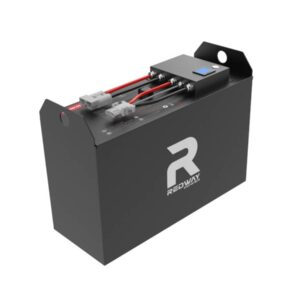What are concerns that should be looked for when inspecting the battery?
When inspecting batteries, prioritize checking for physical damage, terminal corrosion, voltage deviations, thermal abnormalities, swelling, and electrolyte levels (if applicable). Pro Tip: Always use insulated tools and wear PPE during inspections to prevent accidental short circuits or exposure to hazardous materials.
Optimal Forklift Battery Installation and Maintenance
What physical signs indicate battery degradation?
Look for cracked casings, bulging cells, or electrolyte leakage. These often precede catastrophic failures. For lithium-ion batteries, even minor deformities exceeding 0.5mm require immediate replacement. Pro Tip: Document findings with photos and caliper measurements for warranty claims.

Beyond visible damage, check terminal connections for white/green corrosion – a sign of sulfation in lead-acid or moisture ingress in lithium systems. Did you know a single corroded terminal can increase resistance by 200%, causing localized overheating? For example, a forklift battery with 5% terminal corrosion may lose 15% runtime. Use baking soda solutions for lead-acid terminals, but never on lithium-ion contacts. Transitioning to thermal patterns, infrared scans often reveal hidden issues before physical symptoms appear.
How should voltage and capacity be tested?
Measure open-circuit voltage after 2-hour rest using a calibrated multimeter. Compare to manufacturer’s state-of-charge chart. Load testing at 50% C-rate provides truer capacity assessment. Warning: Never test lithium batteries below 0°C – it triggers plating and permanent capacity loss.
Practical testing requires understanding voltage sag characteristics. While a 12V lead-acid battery showing 11.8V at rest might seem functional, under 100A load it could crash to 9V – a clear failure. For lithium packs, check cell balance: >50mV deviation between cells demands balancing. Here’s a comparison of testing methods:
| Method | Lead-Acid | Li-ion |
|---|---|---|
| Hydrometer | Effective | N/A |
| Capacity Tester | ±5% Accuracy | ±3% Accuracy |
What thermal issues require attention?
Monitor for hotspots exceeding 45°C in lead-acid or 60°C in lithium batteries. Thermal runaway risks escalate exponentially above these thresholds. Pro Tip: Install temperature sensors on central cells in battery banks for representative readings.
Why do some cells overheat while others stay cool? Uneven current distribution from poor busbar connections often causes this. In a recent case, a 48V LiFePO4 bank failed due to a single loose bolt creating 80% imbalance between parallel strings. Transitioning to cooling solutions, forced air systems should maintain ≤5°C variation across cells. Remember: Every 10°C above 25°C halves lead-acid battery life and accelerates lithium-ion degradation by 2x.
Forklift Battery Maintenance Checklist Essentials
Battery Expert Insight
FAQs
How often should industrial batteries be inspected?
Perform visual checks weekly, full electrical tests quarterly. High-usage environments (e.g., 3-shift warehouses) require monthly infrared scans of connections.
Can corroded terminals be cleaned on lithium batteries?
Never use liquids. Dry-brush with nylon tools, then apply manufacturer-approved antioxidant gel to copper/aluminum terminals.
What voltage deviation warrants cell replacement?
Replace lithium cells when >300mV difference persists post-balancing. For lead-acid, >0.5V imbalance in 12V blocks indicates sulfation damage.
